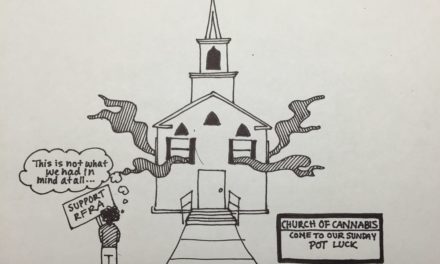May 14, 2015. 1:30 p.m.
Washington, D.C. police respond to a call regarding a house fire on Woodland Drive. Upon entry, the firefighters see nothing out of the ordinary. A tidy home — mansion, rather — that seems to have been the unfortunate victim of an even more unfortunate disaster. But what they find upstairs will lead to one of the biggest investigations the city has ever seen.
Four bodies — a couple eventually identified as Savvas and Amy Savopoulos, known for owning and running the country’s multi-million dollar iron company, American Iron Works; an older woman, their housekeeper, Veralicia Figueroa; and a 10 year-old boy, the couple’s son, Philip. Four bodies and absolutely no sign of a killer.
The Savopoulos family lives only a few blocks down from Vice President Joe Biden. Thus, the most advanced agents, policemen, and law officials in Washington D.C (and the nation) were put to the test with this case. Still, an immediate investigation yields confusing bits of information.
A man who worked for the Savopoulos family comes forward, claiming that he was told by his boss to leave $40,000 in the garage the night before the family was murdered. Surveillance footage near a gas station shows that a man in a hooded sweatshirt set afire one of the family’s cars, miles away from their residence. A full timeline of the events preceding the murders implies that the family was held hostage for almost 72 hours. And the fire that initially drew police to the scene appears to have been intentional, a failed attempt to burn away any evidence that may have linked the murderer to his crime.
Eventually, saliva on a piece of pizza allows police to track down one (and only one) man, Daron Wint, who is ultimately charged and jailed for four counts of first-degree murder.
It seems like a victory for D.C. Police and the forensic system used to find the man linked to this terrifying crime. But what makes this case so different from the 15,000 murders that take place in this country annually is the startling number of unanswered questions that are left behind.
How did one man hold three adults and one child hostage for so long? Who was the man in the footage involving the burning car (face matching software confirmed that it was not Wirt)? Why would a man kill two multi-millionaires for 40 grand? And in a house holding valuables worth more than that amount? Who else was involved in these murders?
How is it possible that four people are dead, and there is only enough evidence to put one man behind bars? A man who, may I add, has alluded many times to having had multiple accomplices.
Regardless of these questions and the answers we may never find, this case brings to light a much larger and pressing concern: the number of murder cases that go cold, unfinished and unsolved every year.
Consider this: more than 211,000 homicides committed in or after 1980 to this day remain unsolved — a total body count that exceeds the population of thousands of cities around the nation. The FBI reports that the national homicide rate is an average of about 14,827 deaths a year. Let’s do the math: 14,827 deaths per year for 35 years make a grand total of about 518,945 killings between 1980 and 2015.
That means that 40.65 percent of the murders that take place in the most advanced country in the world go completely cold.
And that is the unwavering truth.
So forget what “Criminal Minds” tells you — the vast majority of murders are not solved within the hour, and there are few happy endings. In fact, investigators are no more likely to solve a homicide case today than they were 40 years ago.
In fact, things seem to be getting worse.
Reporter Thomas Hargrove writes, “The rates at which homicides are considered cleared — meaning someone was actually arrested and handed over to the courts for trial — have declined alarmingly in America. The FBI estimates that the homicide clearance rate in 2012 was only 64 percent, down from 90 percent reported in 1965 when the government first reported statistics. In many communities, it has become statistically unlikely that a murder will be solved. The Detroit Police Department reported making arrests in only 34 of its 386 homicides in 2012, which is a solution rate of only 9 percent. New Orleans reported solving only 15 percent of its 193 killings that year.”
How is this possible? How can technology and society have both advanced so far in the past decade without having impacted this field at all?
During an exclusive segment on the issue, NPR came up with some reasons why this disturbing trend of unsolved homicides may exist, including higher standards for charging a suspect, distrust of the police, focusing on crime prevention and the expensiveness of homicide investigation in poor communities.
Although these reasons appear comforting, they provide little in the large scale of things. Furthermore, none of these apply specifically to the Savopoulos murders.
And while one can argue that their case is an exception, the hundreds of stories that ravage the Internet with a single search of the word “murder” imply that it is not.
Perhaps it is the way our police departments are funded. Or the priorities of our criminal justice system.
But maybe, just maybe, there is a much deeper problem at hand. A problem that allows for cold-blooded killers to remain unchained and free to walk among us without any fear of being caught, tried and punished for their horrifying and inhumane crimes.
Sunidhi Ramesh is a College sophomore from Johns Creek, Georgia.





